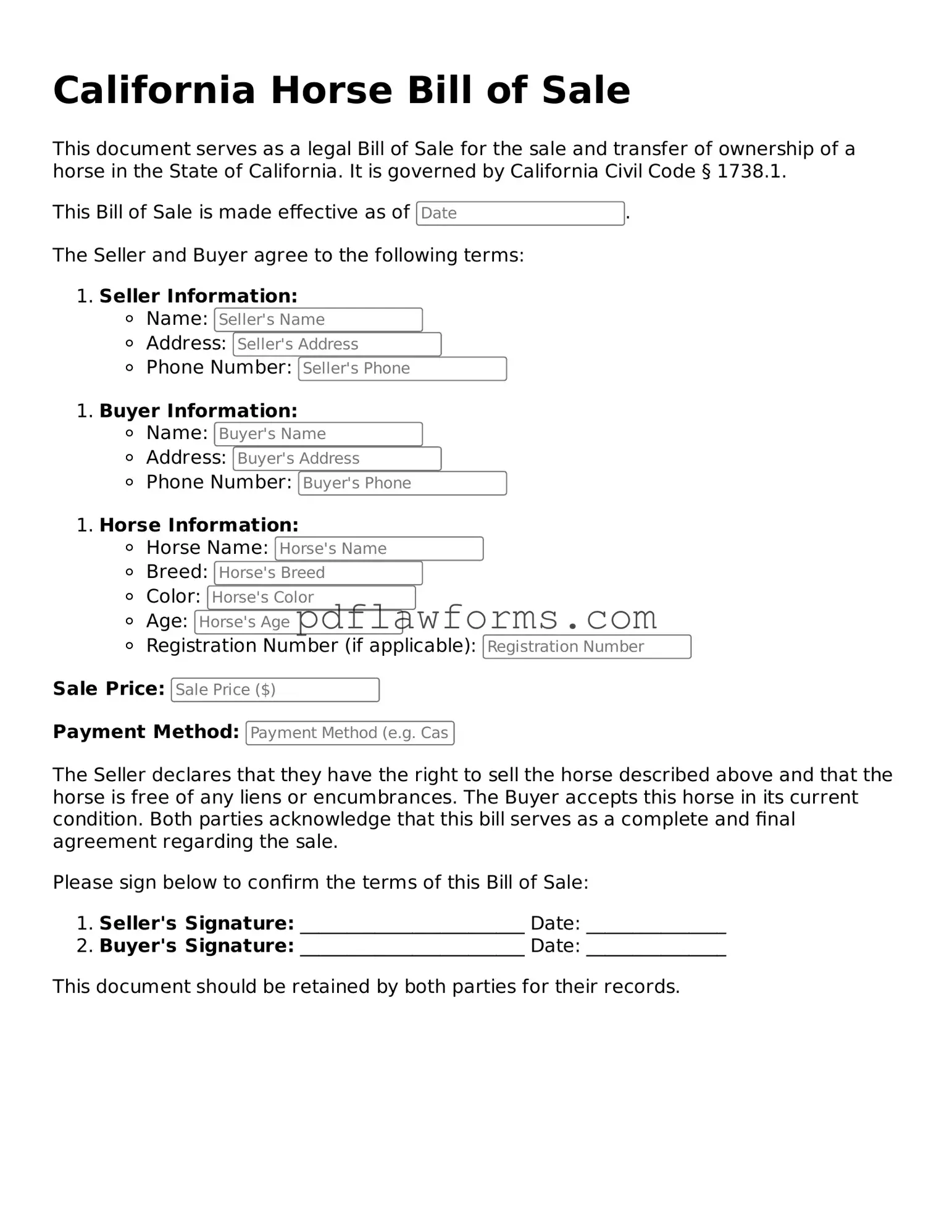When completing the California Horse Bill of Sale form, many individuals overlook important details that can lead to complications down the road. One common mistake is failing to provide accurate identification for both the buyer and the seller. It’s essential to include full names, addresses, and contact information. Inaccurate details can create confusion or disputes later.
Another frequent error involves neglecting to document the horse's specific details. This includes the horse's name, breed, age, color, and any identifying marks. Without this information, it can be challenging to prove ownership or resolve any disputes regarding the horse's identity.
Many people also forget to specify the purchase price. While it may seem straightforward, omitting this detail can lead to misunderstandings about the transaction. Clearly stating the price helps both parties confirm the terms of the sale and protects against potential disagreements in the future.
It's also important to note that some sellers fail to disclose any known health issues or defects of the horse. Transparency is crucial in building trust between the buyer and seller. Not mentioning these issues can lead to legal complications if the buyer later discovers a problem that could have been disclosed.
In addition, individuals often overlook the need for signatures. Both the buyer and seller must sign the bill of sale for it to be legally binding. Skipping this step can render the document invalid, which can complicate the transfer of ownership.
Another mistake is not keeping a copy of the completed bill of sale. After the transaction, it’s vital for both parties to have their own copies for reference. This documentation serves as proof of the sale and can be crucial for future transactions or legal matters.
Lastly, some individuals do not consider the importance of notarization. While not always required, having the bill of sale notarized can add an extra layer of security and validity to the document. This step can be particularly beneficial if any disputes arise in the future.
